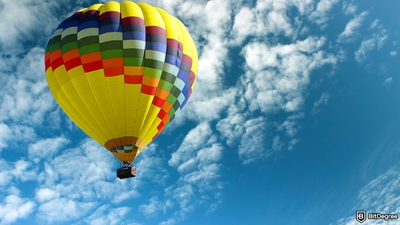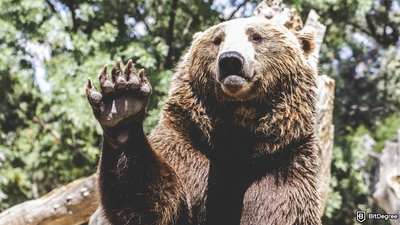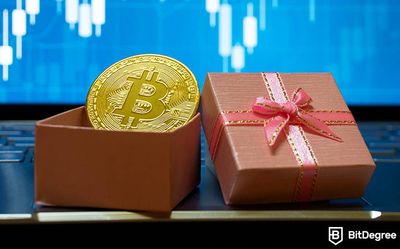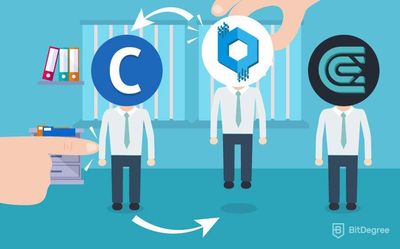Key Takeaways
- Generative art NFTs unlock new frontiers in artistic expression, allowing artists to create mesmerizing artworks driven by algorithms;
- With blockchain technology, these NFTs provide a unique way for collectors to prove ownership and authenticity;
- AI-based tools have revolutionized the generative art NFT creation process, providing the artist with a way to create these artworks without coding.
Free Airdrop Season 7 is LIVE! Answer fun questions or do simple tasks to earn rewards from the $30K BitDegree prize pool. Participate Now ! 🔥
Generative art NFTs have emerged as a captivating and innovative form of artistic expression in the digital realm. Combining the power of algorithms and human creativity, these NFTs are unique pieces of digital artwork that are generated using code. At its core, it's a fusion of technology and artistry, which can be traded on NFT marketplaces like OpenSea or dedicated generative art NFT marketplaces.
While the generative art NFT creation process is quite complicated, the introduction of AI-based tools has simplified it exponentially, allowing even those with minimal technological knowledge to create some amazing art projects.
That said, let's get into what is generative art in more detail (I'll even include a generative art NFT tutorial in the end).

Did you know?
Subscribe - We publish new crypto explainer videos every week!
Layer 2 Scaling Solutions Explained With Animations


Table of Contents
The Origins of Generative Art NFTs
Generative art NFTs, born at the intersection of creativity and technology, draw inspiration from various fields such as computer science and visual art. The essence of what is generative art encompasses the use of algorithms, programming languages, and computational processes to create unique and stunning artworks.
Latest Deal Active Right Now:Head to BitDegree Missions, gather as many Bits as possible & claim your stake of the $30,000 Prize Pool! Don't waste your time & start collecting Bits by completing Missions and referring friends.
The concept emerged in the 1960s, with pioneers like Frieder Nake, Georg Nees, and A. Michael Noll exploring the artistic possibilities of code-generated visuals[1]. At its core, generative art embraces the idea of relinquishing complete control over the artistic outcome, letting the art speak for itself in more than one way.
Artists create a set of rules or instructions that guide the algorithm, allowing for the emergence of unpredictable artworks. This collaboration between human intention and computational logic gives rise to mesmerizing patterns, shapes, and colors that seem almost uncanny yet, at the same time, so familiar.
With the rise of blockchain technology, generative art found a natural ally in the form of NFTs. These tokens are digital assets authenticated and verified on the blockchain, granting provable ownership and scarcity. By integrating NFTs with generative art, a new dimension is added to the experience.
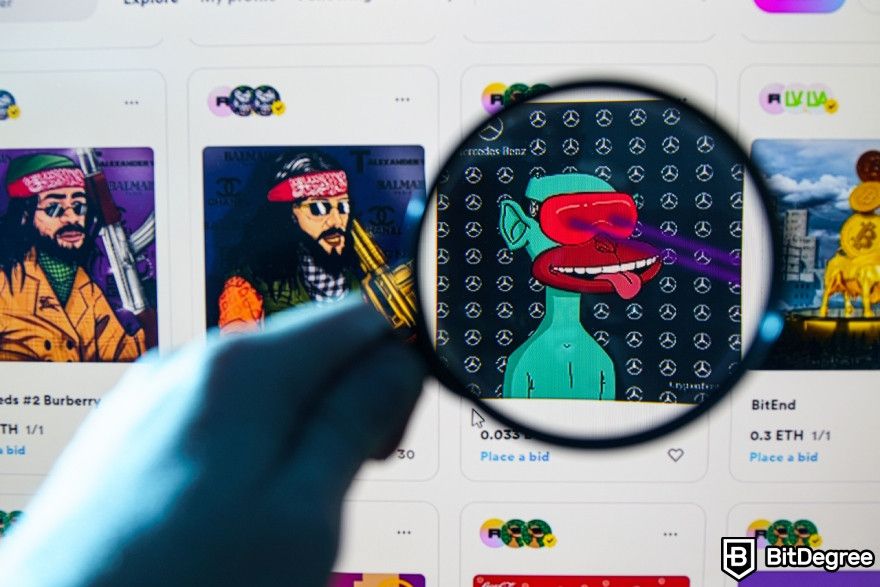
Collectors not only acquire digital artwork but also gain ownership of a distinct piece within a generative art series. As the artwork evolves and mutates over time, the collector's NFT represents their stake in the artistic process and the exclusive right to that specific iteration.
The concept of what is generative art has redefined the NFT market by providing artists with a new platform to showcase their creations and establish direct connections with collectors. The technology behind NFTs ensures provenance and authenticity, while also addressing the concerns surrounding digital art ownership.
The fusion of generative art and NFTs also pushes the boundaries of creativity, shaping a new paradigm for the art world in the digital age, and leading to groundbreaking generative art NFT projects. These projects exemplify the creative potential of the NFT art world, from dynamic interactive pieces to awe-inspiring generative narratives.
Renowned Generative Art NFT Projects
After exploring what is generative art and its integration with NFTs, let’s look into a few popular and well-known generative art NFT projects. These projects harness the power of algorithms, artificial intelligence, and blockchain technology to create mesmerizing, ever-evolving digital artworks.
Autoglyphs
Autoglyphs, a groundbreaking and unique project, merges generative algorithms with blockchain technology to create a revolutionary digital art experience. Developed by the artist Tyler Hobbs, it leverages the Ethereum blockchain to generate and store self-contained art within its smart contracts.
What sets Autoglyphs apart is that each artwork is generated directly on-chain, ensuring immutability and verifiability. By utilizing the Ethereum blockchain, Autoglyphs achieves a remarkable level of transparency and integrity.
The generative algorithm and resulting art are stored immutably, with no reliance on external images or metadata. This unique approach establishes the generative algorithm as an integral part of the artwork's code, empowering collectors to recreate and validate the artwork at any time.
Autoglyphs explores the concept of algorithmic art through a set of building blocks or "glyphs." These glyphs are combined through a generative process defined by the algorithm, resulting in intricate and visually stunning compositions.
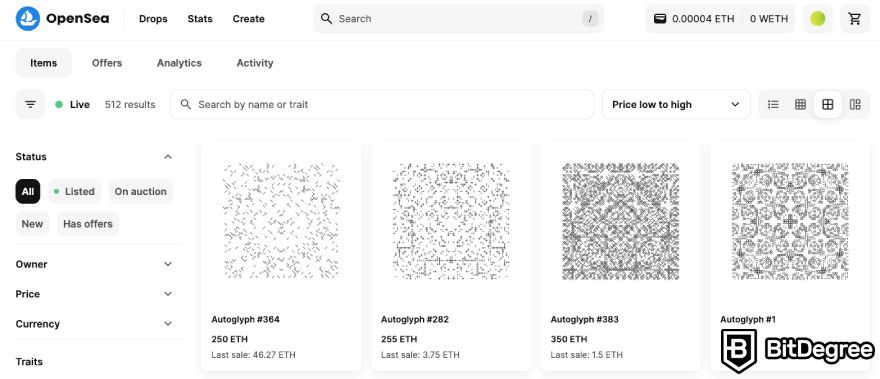
While the generative process is deterministic, the vast number of possible combinations ensures that each artwork remains one-of-a-kind, making it inherently rare and unique.
By acquiring Autoglyphs, collectors not only possess captivating artworks but also become custodians of the generative process itself. The ownership of an Autoglyph grants collectors the ability to generate and verify the artwork, establishing a new level of transparency and creative ownership. This groundbreaking approach brings a fresh sense of interactivity and authenticity to the world of art NFTs.
Overall, Autoglyphs has garnered immense interest within the generative art and NFT communities, thanks to its innovative fusion of generative algorithms and blockchain technology. Through it, Tyler Hobbs has elevated generative art to new heights, redefining creative expression, scarcity, and verifiability on the Ethereum blockchain.
This generative art NFT project serves as a testament to the limitless possibilities of merging art and technology. Its pioneering approach captures both collectors and artists.
Edifice
Edifice, created by Ben Kovach, explores the captivating intersection of architecture, generative design, and blockchain technology. This innovative project utilizes generative algorithms to generate unique and visually captivating architectural structures, which are then minted as NFTs.
This project stands out for its deliberate focus on creating intricate and awe-inspiring architectural forms using generative algorithms. Through the interplay of mathematical rules, parameters, and randomness, each Edifice artwork emerges as a testament to the power of algorithmic design.
The generative process gives rise to a diverse array of visually striking architectural compositions, ensuring that every NFT is a truly unique artwork. The algorithm driving Edifice produces a broad spectrum of architectural styles, ranging from futuristic skyscrapers to abstract and fantastical structures.

Drawing from design principles such as proportion, symmetry, and spatial relationships, the algorithm generates visually harmonious and captivating forms. Each generated Edifice is a unique synthesis of these architectural principles, immersing collectors in a mesmerizing visual experience.
By minting Edifice artworks as NFTs, Ben Kovach provides collectors with a tangible representation of these algorithmically generated architectural wonders. The NFTs serve as certificates of authenticity and ownership, empowering collectors to own and trade these digital assets seamlessly within generative art NFT marketplaces.
All in all, Edifice has garnered significant attention and appreciation, thanks to its ability to showcase the creative potential of generative design. By melding art, architecture, and blockchain technology, Edifice opens up new avenues to engage with and appreciate the beauty and intricacy of generative art within the digital realm.
Lost Poets
The Lost Poets NFT collection is a captivating initiative in the blockchain and digital art arena, created by Murat Pak, an acclaimed digital artist known simply as "Pak." Launched in September 2021, this collection has garnered significant interest from both the art and cryptocurrency communities due to its unique approach and the reputation of its creator.
The collection comprises over 28,000 NFTs, each representing a unique, algorithmically generated poet. These digital poets are not only distinct in appearance but were also sold in a randomized fashion, adding an element of mystery and excitement to the acquisition process. The unpredictability of which poet one might receive heightened the intrigue around the release.
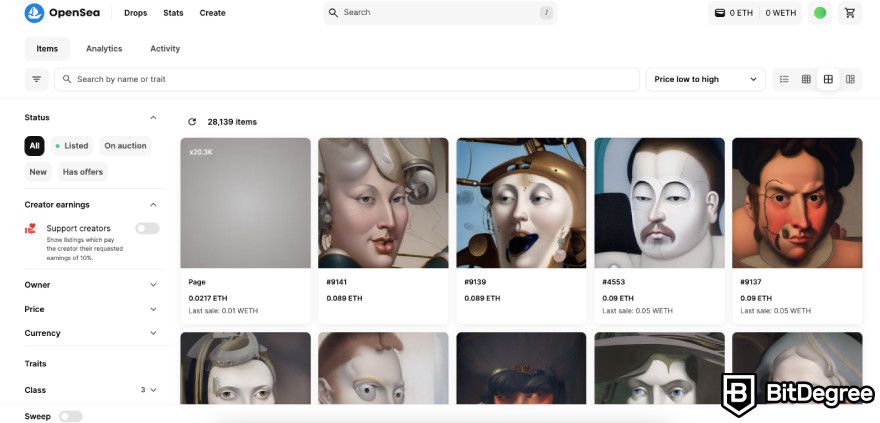
A defining characteristic of the Lost Poets collection is its reliance on algorithmic generation for each poet's image, ensuring uniqueness. Furthermore, the project is interactive and evolves over time. Owners of the Poets can engage with their NFTs by 'claiming' words at certain intervals. These words can be used to modify or enhance the attributes of their poet, infusing a dynamic and gamified aspect into the collection.
By merging the enigmatic allure of anonymous poets with cutting-edge digital art capabilities, Pak has not only made a significant contribution to the art scene but has also expanded the possibilities of what digital art collections can achieve in the realm of blockchain. The Lost Poets collection stands as a testament to the evolving relationship between technology, art, and community in the digital age.
Having explored the world of these renowned projects, it's natural to wonder where these captivating artworks can be acquired and traded. Fortunately, a vibrant marketplace has emerged to cater to the growing demand for these peculiar NFTs. So, let's dive into the platforms and generative art NFT marketplaces that serve as hubs for collectors, artists, and enthusiasts seeking to engage with this exciting digital art form.
Where to Buy (and Sell) Generative Art NFTs?
When it comes to buying generative art NFTs, there are several platforms available, each offering its own unique features and benefits. Two of the most popular platforms in this space are OpenSea and Rarible.
OpenSea stands out as a prominent decentralized marketplace that supports various blockchain networks, including Ethereum. It provides a wide range of generative NFTs created by numerous artists, offering collectors a diverse selection to explore and acquire.
With its user-friendly interface and extensive range of available artwork, it has established itself as a go-to destination for generative art enthusiasts (and NFT enthusiasts in general). Moreover, the platform gives artists the flexibility to set their own prices and royalty fees, empowering them to showcase their art and connect directly with collectors.
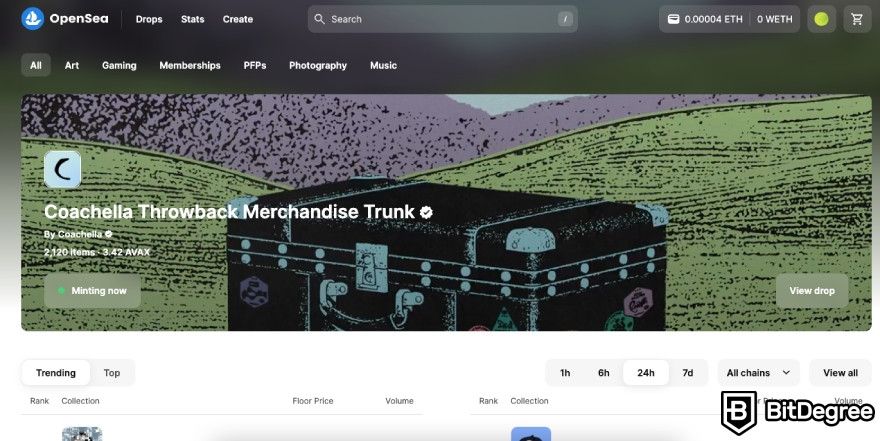
In a similar vein, Rarible serves as a popular marketplace for generative art NFTs (but it offers way more than just these NFTs). With a vibrant community of creators and collectors, Rarible offers an engaging and supportive environment for artists.
It allows users to create and sell their own generative NFTs, providing a platform for artists to bring their visions to life and share them with a dedicated audience. With its user-centric approach and diverse range of offerings, Rarible has become an attractive choice for both artists and collectors seeking unique generative art NFTs.
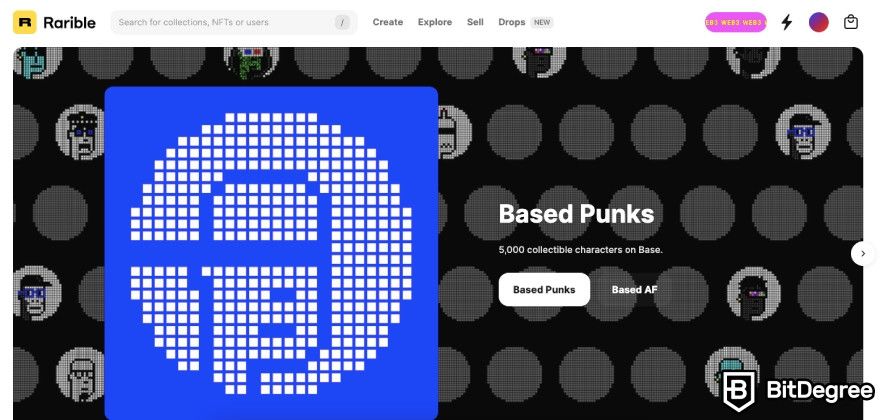
While both OpenSea and Rarible serve as some of the most popular gateways to an expansive and ever-growing world of remarkable NFTs, do note that there are several generative art NFT platforms made specifically for this type of NFTs.
Art Blocks, for example, is a pioneer in almost all senses of this concept. It has gained significant recognition and popularity in the digital art community. As a marketplace, Art Blocks showcases algorithmically generated artworks created by a diverse array of artists.
What sets it apart is the emphasis on the generative process itself, which allows artists to define the algorithmic rules that produce unique and verifiably scarce NFTs. One of its key features is the curation of art collections. Each one consists of generative algorithms created by artists, and collectors can acquire these NFTs.
Hence, Art Blocks has created a vibrant ecosystem where artists can explore the possibilities of generative art, while collectors can discover and acquire one-of-a-kind NFTs. The platform also empowers artists by providing them with tools and resources to create their generative algorithms, fostering creativity and innovation.

Simultaneously, collectors have the opportunity to own and appreciate visually compelling artworks that are both rooted in computational creativity and scarce in nature. Their community has flourished, attracting both established and emerging artists who push the boundaries of generative art.
The platform serves as a hub for innovation and experimentation, driving the evolution of the art NFT space. Through its curation process and commitment to showcasing unique generative algorithms, it continues to foster a sense of discovery and excitement for collectors seeking rare and unique art NFTs.
Now, after exploring the platforms where you can buy and sell generative NFTs, it is time to dive into the fascinating process of creating these captivating digital artworks.
The process of how to make generative art NFTs usually involves a unique blend of artistic vision, programming skills, and algorithmic design. However, with the emergence of AI-based generative tools, you can take programming skills and algorithmic design out of the equation.
How to Create Generative Art NFTs?
While the specific steps may vary depending on the artist's approach and chosen tools, there are several key points to consider when talking about how to make generative art NFTs.
Firstly, conceptualization sets the foundation for the creative process. Artists must define the overarching aesthetic goals, themes, and desired outcomes for their generative art NFTs. This involves making decisions about the overall style, colors, shapes, and patterns that will be generated by the algorithm.
You may draw inspiration from diverse sources, such as nature, mathematics, or personal experiences, to develop your creative vision.
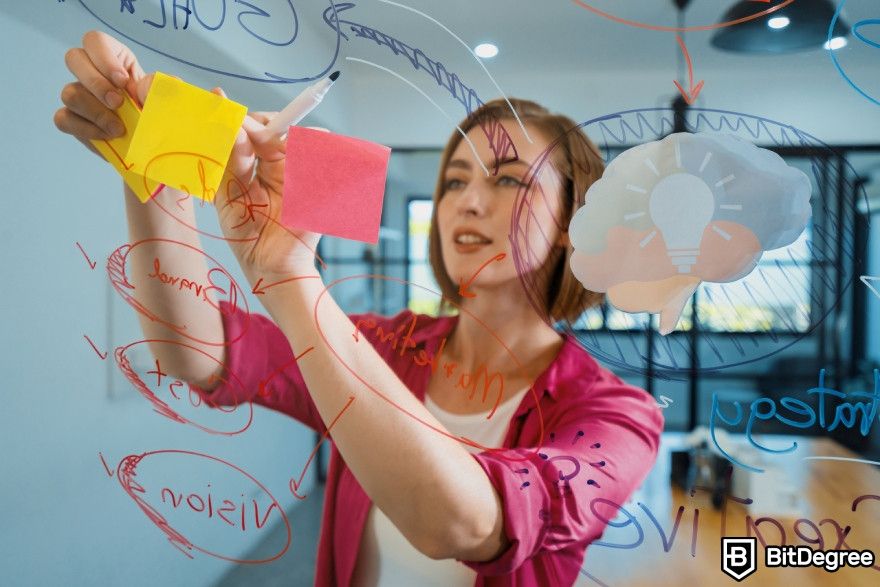
Once you have the idea, programming and algorithm design come into play. Artists leverage various software tools and programming languages to write the code that generates the artwork. Popular choices include Processing, a versatile programming language specifically designed for visual arts, and JavaScript with libraries like p5.js, which offer flexibility and interactivity.
These programming languages allow artists to define the rules, behaviors, and parameters that guide the generative process. Mathematical equations, randomization techniques, and procedural algorithms are employed to achieve the desired visual outcomes.
The answer to the question of how to make generative art NFTs also often involves iterative exploration. Artists fine-tune the code, adjusting parameters and rules to achieve the desired aesthetic outcomes.
Through an ongoing feedback loop, artists observe the generative algorithm's results and make incremental refinements to bring their artistic vision to life. This approach encourages experimentation, discovery, and the emergence of unique variations and unexpected artistic expressions.
Then, with software programs like Adobe Photoshop and Adobe Illustrator, artists manipulate, enhance, and refine the generative results. They usually experiment with color grading, layering, blending modes, and other techniques to add depth, texture, and visual impact to their creations.
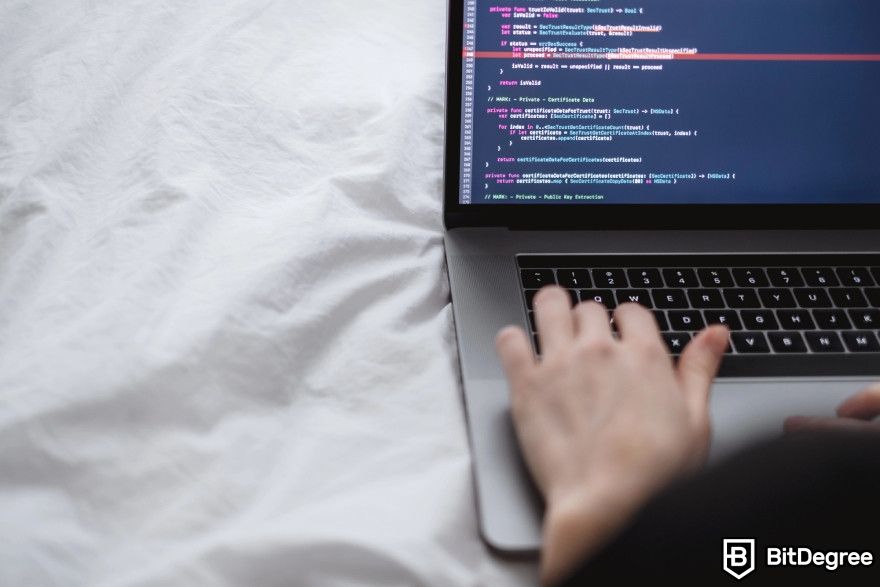
However, those who don't want to get into the complicated coding-based process, turn to generative AI-based software such as DALL·E or Midjourney to create their art. Just note that while it simplifies a lot, there is a never-ending debate about copyright[2].
Eventually, after finalizing the generative artwork, artists have the opportunity to tokenize their creations as NFTs. This process is done on platforms like OpenSea or Rarible. Tokenization establishes the artwork's provenance, rarity, and ownership authenticity on the blockchain, enabling artists to create unique digital assets that can be bought, sold, and collected by art enthusiasts.
This process not only provides artists with new avenues for exposure and monetization but also opens up exciting possibilities for the wider art community to engage with and appreciate these NFTs.
To sum up, to make generative art NFTs, you'll just need a harmonious blend of artistic sensibility and technical skills. By leveraging programming languages and software tools (or the right AI-based tools), you can unlock the full potential of algorithmic creativity.
Through this convergence of art and technology, artists can bring to life visually captivating and ever-evolving generative art pieces that redefine the boundaries of artistic expression in the digital realm. That said, let’s dive into a more specific generative art NFT tutorial.

- Secure and reliable
- Accepts fiat currencies
- Lots of trading options
- Reputable exchange
- Accepts fiat currencies
- Offers various trading options

- Fiat currencies - accepted
- Simple to use
- Accepts only the most trustworthy cryptocurrencies
- A leading cryptocurrency exchange platform
- Best for beginner investors
- Accepts fiat currencies

- Fully reserved and transparent
- Multiple tradable asset classes
- Over 300 supported cryptos
- Over 300 cryptocurrencies
- Secure & transparent
- Fully reserved
Creating Generative Art NFTs With DALL·E and OpenSea
Let's take the easier route and look into generative art NFT creation using AI tools (they don't require any coding knowledge). DALL·E is an AI-powered generative art tool developed by OpenAI. It allows users to generate unique and imaginative artwork based on textual prompts. So, here's a step-by-step guide on how to create generative art NFTs using DALL·E and OpenSea (the latter is for minting and listing your NFT):
Step 1: Conceptualize Your Artwork
The first and most important step of how to create generative art NFTs begins by conceptualizing the idea for your artwork. Think about the visual elements, themes, and styles you want to explore. DALL·E takes text prompts as input, so consider the descriptive phrases or keywords that best capture your artistic vision.
Step 2: Go to ChatGPT
You can access DALL·E (the third version) via ChatGPT. Just note that you must have the ChatGPT Plus subscription for that.
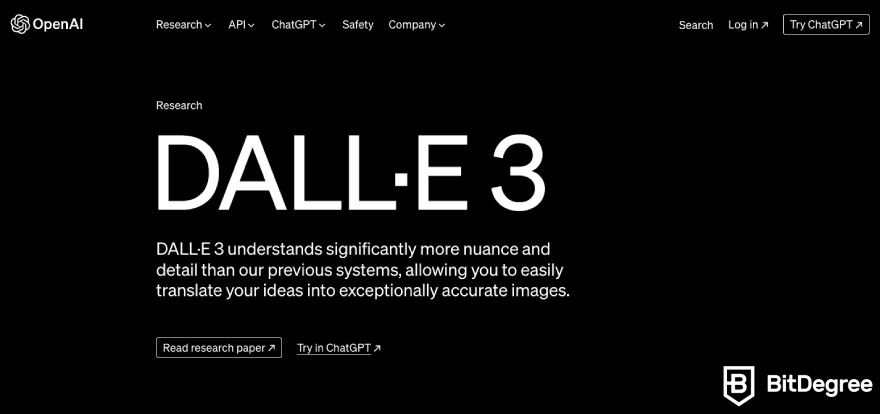
Step 3: Generate Artwork with Text Prompts
Enter your chosen text prompts into the ChatGPT interface. These prompts can be as simple as a single sentence with a few descriptive words, or more elaborate, providing specific details about the desired visual elements.

The software will process the input and generate an image based on your prompts. You can experiment with different prompts to generate a variety of results.

Step 4: Refine and Iterate
Review the generated image and assess how well it aligns with your artistic vision. If needed, refine the artwork by tweaking the text prompts or selecting the specific area you want to change (just click on the image to access this tool). Iterate this process until you are satisfied with the generated artwork.

Step 5: Export the Artwork
Once you are satisfied with the generated artwork, export it from the ChatGPT interface. Save the image file locally or to cloud storage for further processing and preparation for NFT minting.

Step 6: Choose an NFT Minting Platform
To turn your DALL·E-generated artwork into an NFT, you'll need to choose a platform that supports NFT creation. As I've mentioned before, in this generative art NFT tutorial, I'll go with OpenSea. Here, the first step is logging in using a crypto wallet (for example, the Coinbase Wallet).
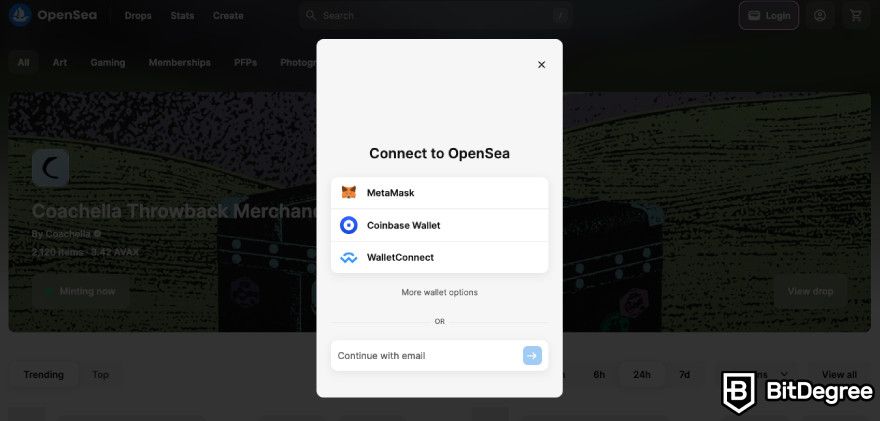
For the smoothest experience, make sure to have a browser extension of your wallet (if that's possible). Besides, ensure you have sufficient funds for transaction fees because you'll need that later for NFT creation.
Step 7: Mint the Artwork as an NFT
Open the NFT creation interface by clicking [Create] and then [Mint an NFT]. Once you're there, you'll need to create an NFT collection for your artwork, upload the image file, provide relevant data (title, description, and supply), set traits, and then mint your NFT.
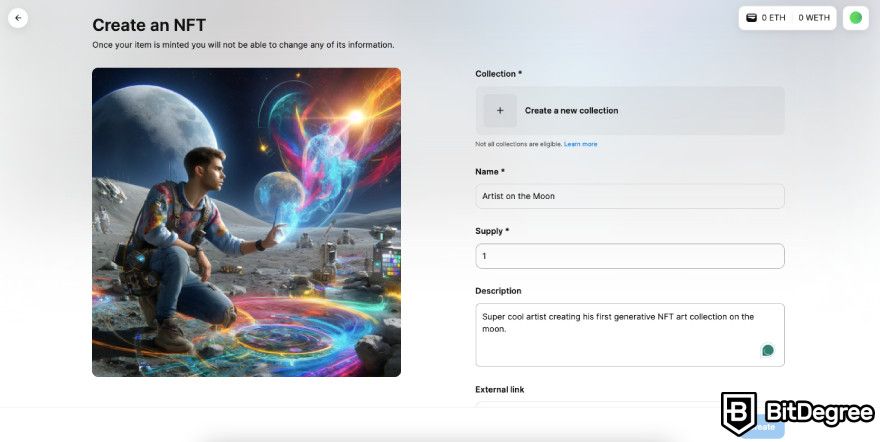
The process on other generative art NFT marketplaces is usually more or less the same. By the way, you can find more thorough guides here (better yet, these guides are focused on free NFT creation).
Step 8: Showcase and Promote Your NFT
Once your artwork is minted as an NFT, list it and share it with the art community and potential collectors. Utilize social media platforms and art communities to promote and showcase your artwork. Engage with collectors, art enthusiasts, and other artists to build connections and increase exposure for your NFT art.
That's it! Now you know how to create generative art NFTs without coding. Just make sure to always familiarize yourself with the terms and conditions of the platform and any chosen NFT marketplace before proceeding with artwork generation and NFT minting.
Conclusions
Generative art NFTs revolutionize digital art by combining algorithms, creativity, and blockchain. Artists create dynamic and unique artworks using generative processes, while blockchain ensures authenticity and scarcity.
Overall, this concept redefines how we create, appreciate, and collect art, challenging traditional notions of authorship and ownership. As the field evolves, more and more artworks pop up on marketplaces like OpenSea or specialized generative art NFT marketplaces.
By following the generative art NFT tutorial above, you'll be able to create your own masterpiece and list it on one in no time, too.
The content published on this website is not aimed to give any kind of financial, investment, trading, or any other form of advice. BitDegree.org does not endorse or suggest you to buy, sell or hold any kind of cryptocurrency. Before making financial investment decisions, do consult your financial advisor.
Scientific References
1. B. Qiu, C. Zheng, Z. Wang, et al.: 'Innovative Strategies for Generative Art in the NFT Market: A Case Study of the Art Blocks';
2. M.D. Murray: 'Generative and AI Authored Artworks and Copyright Law'.



